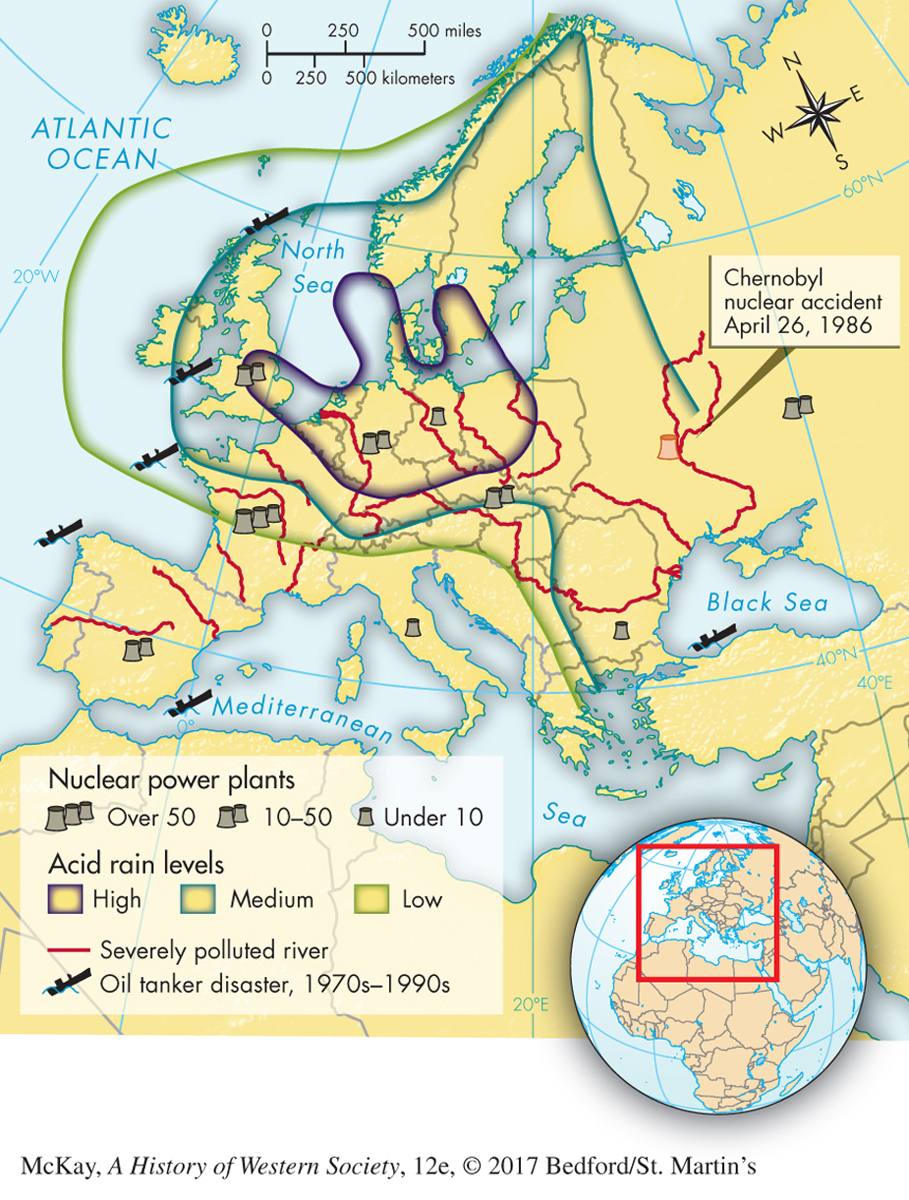A History of Western Society: Printed Page 999
A History of Western Society, Value Edition: Printed Page 959
A History of Western Society, Concise Edition: Printed Page 1001
The Rise of the Environmental Movement
Like feminism, environmentalism had roots in the 1960s counterculture. Early environmentalists drew inspiration from writers like U.S. biologist Rachel Carson, whose book Silent Spring, published in 1962, was quickly translated into twelve European languages. Carson’s chilling title referred to a future spring, when people in developed society would wake up and hear no birds singing, because they had all been killed by the rampant use of pesticides. The book had a striking impact on the growth of environmental movements in Europe and North America.
By the 1970s the destructive environmental costs of industrial development in western Europe and the East Bloc were everywhere apparent. The mighty Rhine River, which flows from Switzerland, past France, and through Germany and the Netherlands, was an industrial sewer. The forests of southwestern Germany were dying from acid rain, a result of smokestack emissions. The pristine coast of Brittany, in northwest France, was fouled by oil spills from massive tanker ships. Rapid industrialization in the East Bloc, undertaken with little regard for environmental impact, severely polluted waterways, contaminated farmlands and forests, and degraded air quality. Nuclear power plants across Europe were generating toxic waste that would last for centuries; serious accidents at nuclear plants — at Three Mile Island in Pennsylvania (1979) and at Chernobyl in Soviet Ukraine (1986) — revealed nuclear power’s potential to create human and environmental disaster (Map 29.1). These were just some examples of the environmental threats that inspired a growing environmental movement to challenge government and industry to clean up their acts.

Environmentalists had two main agendas. First, they worked to lessen the ill effects of unbridled industrial development on the natural environment. Second, they argued that local environmental problems often increased human poverty, inequality, and violence around the globe, and they sought ways to ameliorate the impact of environmental decline on human well-
Environmental protesters also built new institutions, particularly in North America and western Europe. In 1971 Canadian activists established Greenpeace, a nongovernmental organization dedicated to environmental conservation and protection. Greenpeace quickly grew into an international organization, with strong support in Europe and the United States. In West Germany in 1979 environmentalists founded the Green Party, a political party to fight for environmental causes. The West German Greens met with astounding success when they elected members to parliament in 1983, the first time in sixty years that a new political party had been seated in Germany. Their success was a model for like-